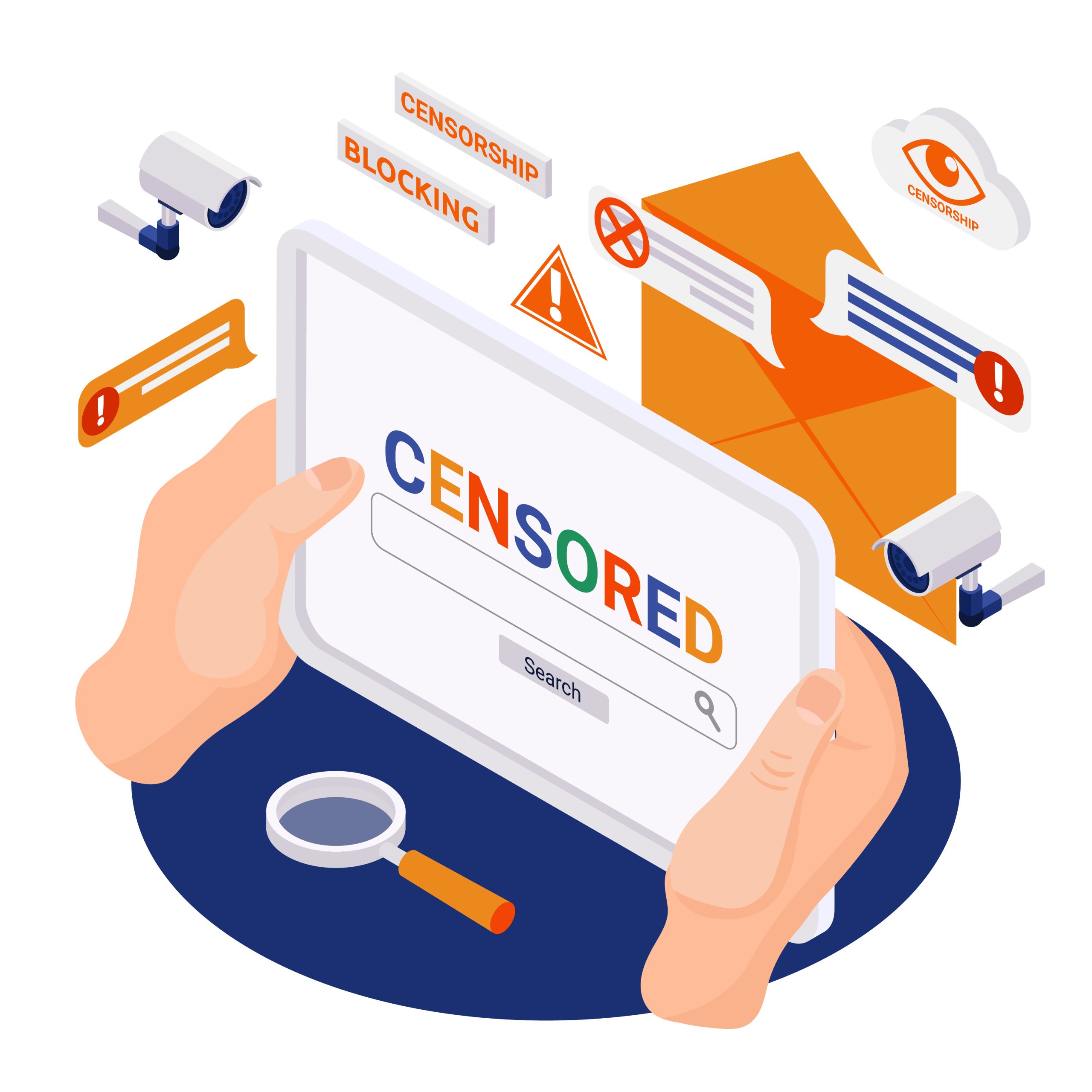The internet was created on the principle that it would be a free and open platform for speech and expression. Unfortunately, as technology has advanced so too have the instruments to restrict access to sites and services. The ability to share ideas or criticism to a large audience hasn’t been well received by authoritarian governments and in the more liberal countries, there’s an ongoing battle to retain internet freedoms. The silver lining is that new tech that’s enabled internet censorship has also provided the tools to avoid censorship and now we are stuck in a cat and mouse game between censorship avoidance and censorship enforcement.
What is internet censorship?
Internet censorship is the control or suppression of what can be accessed, published, or viewed on the internet. It may be carried out by governments, institutions, or individuals.
How does internet censorship work?
There are a number of ways that internet censorship can work. One common method is DNS (domain name system) filtering. This involves blocking access to specific domain names that are associated with the content that is being censored. Another common method is IP (internet protocol) blocking. This involves blocking access to specific IP addresses that are associated with the content that is being censored.
Websites are hosted on servers with a unique IP address and when that address is blacklisted by a censorship authority, the site becomes unavailable. Other methods include URL blocking and keyword filtering.
URL blocking works in a similar fashion to IP and DNS blocking but instead of blocking DNS requests, the censor blocks access to the specific URL of a site. This can be bypassed by using an alternate URL, such as a bitly link. Keyword filtering looks for specific words or phrases in web traffic and blocks any traffic that contains those keywords. This can be circumvented by using alternative spellings or synonyms.
Where Does Internet Censorship Occur?
- On the device that is connected to the internet (such as your smartphone or work laptop, etc.)
- On your local network (e.g., your home WiFi, your work WiFi, at the router, etc.)
- At your Internet service provider (ISP)
- At your search engine (Google, Baidu, Bing)
How To Overcome Internet Censorship?
There are many tools available to help users bypass internet censorship. The most popular is the VPN, which encrypts all traffic and routes it through a server in a location of the user’s choosing. This hides your IP address and the intended location or an internet user’s traffic from their ISP (the service that provides them internet) and convinces the site they are accessing that they are in another country entirely.
VPNs can get around some but not all censorship applied on devices if it’s concerned with the outgoing IP address, but they are unable to outsmart keyword filtering applied by a search engine.
Other tools include the Tor network, which uses a similar technique to VPNs but is free and open-source, and proxy servers, which act as an intermediary between the user and the internet. Proxies can be used to bypass censorship but they are not as effective as VPNs because they work with a single application at a time while a VPN will re-route all of the traffic leaving your phone or computer.
Examples of Internet censorship in 2022
- Great Firewall of China – The Chinese government maintains a tight grip on what its citizens can access online. In order to enforce this censorship, they have built the Great Firewall of China. This firewall uses a combination of techniques to block access to websites and content that the government has deemed undesirable
- Russia – Russia has been increasingly cracking down on internet freedom in recent years. In 2016, they introduced the Yarovaya Laws, which require ISPs to keep records of user data and communications for up to six months. They also have a blacklist of sites that are blocked by ISPs. This censorship is enforced by the Roskomnadzor, a government agency that is responsible for regulating the internet
- Turkey – In 2007, Turkey passed a law that allowed the government to block websites without a court order. In 2014, they blocked Twitter and YouTube after leaks revealed corruption within the government. And in 2016, they blocked Wikipedia after it refused to remove articles critical of the government
- The US – The United States has not passed any laws specifically targeted at internet censorship. However, there have been some attempts to do so. In 2012, the Stop Online Piracy Act was introduced in Congress but it was never passed into law. In 2017, the FCC voted to repeal net neutrality, which could lead to internet providers censoring content on their networks.
Internet freedom has decreased for the 11th year in a row, according to Freedom House’s 2021 Freedom on the Net report (FOTN).
The FOTN report uses a point system to rate each country’s internet freedom on a scale of 0 to 100, with 100 being the freest. A country’s score is based on three categories: obstacles to access, limits on content, and violations of user rights. The 2021 report found that the global average score for internet freedom was just 46 out of 100, with only 15 percent of countries receiving a “free” rating, 30 percent receiving a “partly free” rating, and 55 percent receiving a “not free” rating.
Countries with the highest scores in the FOTN report tend to have fewer restrictions on internet access and content, and stronger protections for user rights. These countries include Iceland, Estonia, Canada, Australia, and the US.
At the other end of the spectrum are countries like China, Iran, Syria, and Cuba, which have some of the most restrictive internet policies in the world. These countries heavily censor online content and often jail citizens for expressing dissenting opinions online.
Deep Packet Inspection (DPI)
DPI is a new and advanced form of censorship that uses AI to inspect packet metadata to determine what type of traffic is being transferred. Even when traffic is encrypted, these algorithms can identify the type of traffic and can block it if it is deemed to be undesirable. This makes it much harder for people to bypass the censorship using VPNs or other tools.
When DPI is used for censorship, it is often combined with other techniques like URL filtering and DNS blocking. This makes it even more difficult to circumvent censorship, as there are multiple layers of restrictions in place.
DPI is a major concern for internet freedom advocates, as it could be used to effectively censor the internet with very little transparency or accountability. However, as we said at the start of this article as the instruments of censorship advance so too do our tools to combat it, and recently VPNs have started using AI and other advanced ossification techniques to disguise the type of traffic.
Let’s Wrap This Up
Internet censorship is on the rise around the world. While some countries have more restrictive policies than others, all countries are moving towards greater censorship. This trend is worrying for advocates of internet freedom, as it could lead to a situation where the internet is completely censored. However, as we have seen, technology always evolves and there are tools available to help people circumvent censorship.






























































